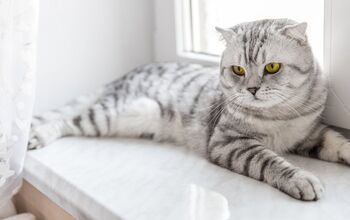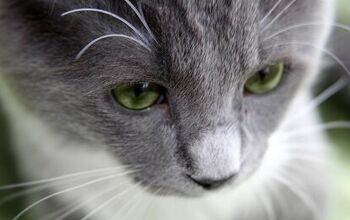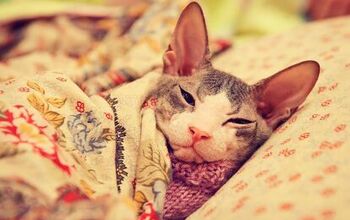5 Feline Skin Conditions You Should Know About

Your cat’s skin could tell you a lot about his overall health, so it’s important to take note if you see your kitty constantly licking, biting, or scratching himself in an attempt to get relief, or if you notice that your cat’s skin looks inflamed, has scabs, or has patches without fur.
Below are a few of the many skin diseases that can affect felines so you can recognize a problem as early on as possible and get your kitty the veterinary treatment he needs to get better.
Alopecia (Hair Loss)
While it’s normal for your kitty to shed some fur, it isn’t normal when he begins losing more hair than what’s normal for him, and it’s especially abnormal if he develops bald spots.
Alopecia, also known as hair loss, should be examined by a veterinarian, as it could be a symptom of illness, as well as a sign of poor nutrition, allergies, stress or anxiety, or parasites.
Related: How to Choose the Right Scratching Post for Your Cat
Flaky Skin
If you start noticing that your kitty has persistent dandruff, or flaky skin that’s appearing on his fur, it’s a good idea to have him examined by a vet to determine the cause. Some cats will end up getting dry and flaky skin during the winter, in particular, so knowing what’s normal for your pet is also helpful.
But if the dandruff doesn’t go away, it could be a sign that your cat isn’t grooming himself enough, that there is an underlying condition that needs to be treated, or that he isn’t getting adequate nutrition.
A diet change or supplementation with nutrients like omega-3 fatty acids may be all that’s needed, or your vet may recommend specialized shampoos or other remedies, depending upon the cause.
Related: What You Don’t Know About Ringworm in Cats
Bacterial Skin Infections
Bacterial skin infections can occur because of another skin problem. So, for example, if your kitty has feline acne, the hair follicles on his chin could become susceptible to infection, leading to folliculitis.
Symptoms of bacterial skin infections include itchiness, alopecia, lesions, crusted skin, pustules, and dried discharge.
The good news is that, should you notice any signs of bacterial skin infections, your vet will be able to provide you with antibiotics that will help clear the condition, and you’ll also be given the right guidance to address the underlying cause(s) of the bacterial infection so that a recurrence can be prevented.
Allergic Dermatitis
Allergic dermatitis could be the result of your kitty being allergic to anything from environmental irritants like pollen, to flea bites, food, or grooming products. Your vet will help you find the cause of your cat’s discomfort. For example, if your pet is always scratching his neck or head, he may be suffering with food allergies. If he’s always chewing on the base of his tail or on his paws, on the other hand, there might be other allergies to blame.
Allergic dermatitis could result in skin lesions or hair loss, and this could occur anywhere on your pet’s body, including his belly.
It may be difficult to determine the cause, but working with your vet could help, and the doctor can prescribe soothing remedies in the meantime. Once the culprit is found, avoiding exposure to the allergen(s) could prevent problems from recurring.
Ringworm
Ringworm is a fungus that can affect kitties, causing circular lesions, usually on the ears, forelimbs, and head. The skin surrounding the lesions is typically bald and flaky.
If you notice signs of ringworm on your cat, bring him to the vet right away, as this fungus is contagious and could spread to the people and pets in your family. Your vet will prescribe the treatment, which could include ointments, oral medications, and shampoos, to remove the fungus as soon as possible.
These are just a few of the many feline skin conditions that can occur. If you ever notice any changes in your cat’s skin and coat, have him examined by your vet to determine the cause and get the right treatment plan to bring your kitty’s skin back to a healthy state.

Lisa Selvaggio is a freelance writer and editor, and our resident cats-pert, with certifications in pet nutrition and pet first aid. She enjoys producing content that helps people understand animals better so they can give their pets a safe and happy home.
More by Lisa Selvaggio























